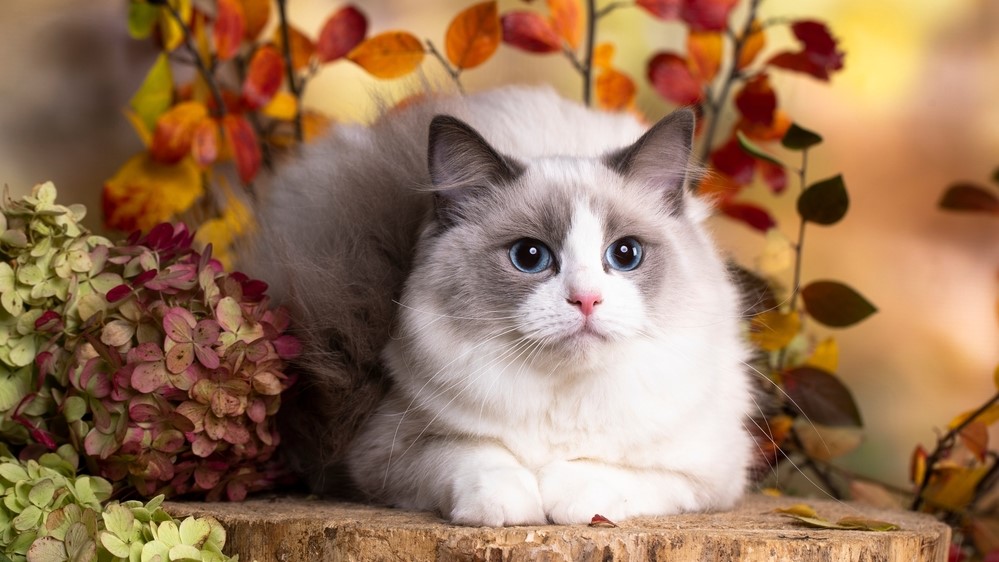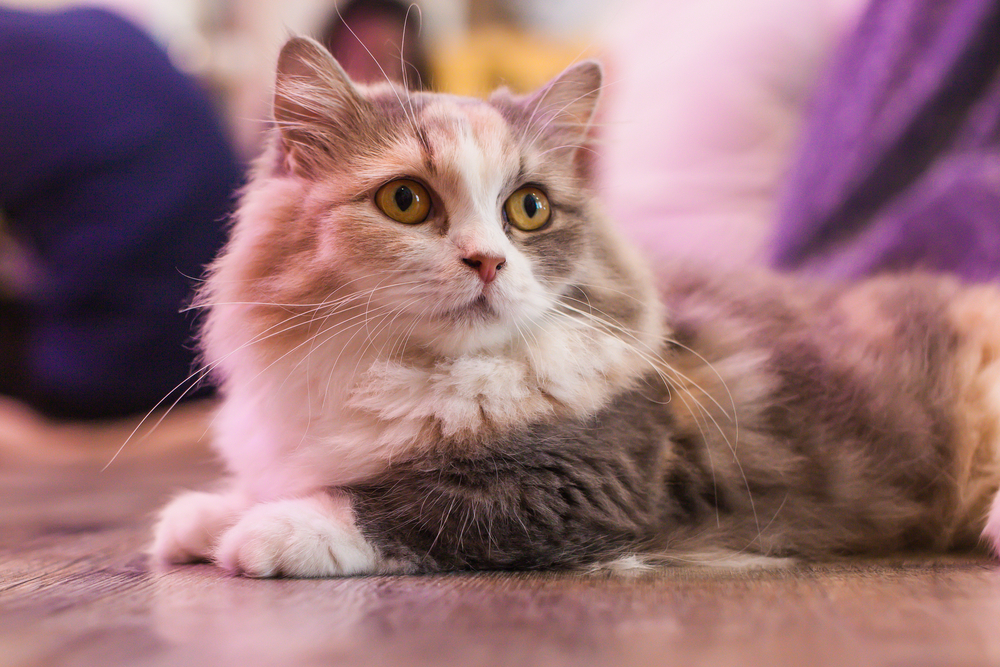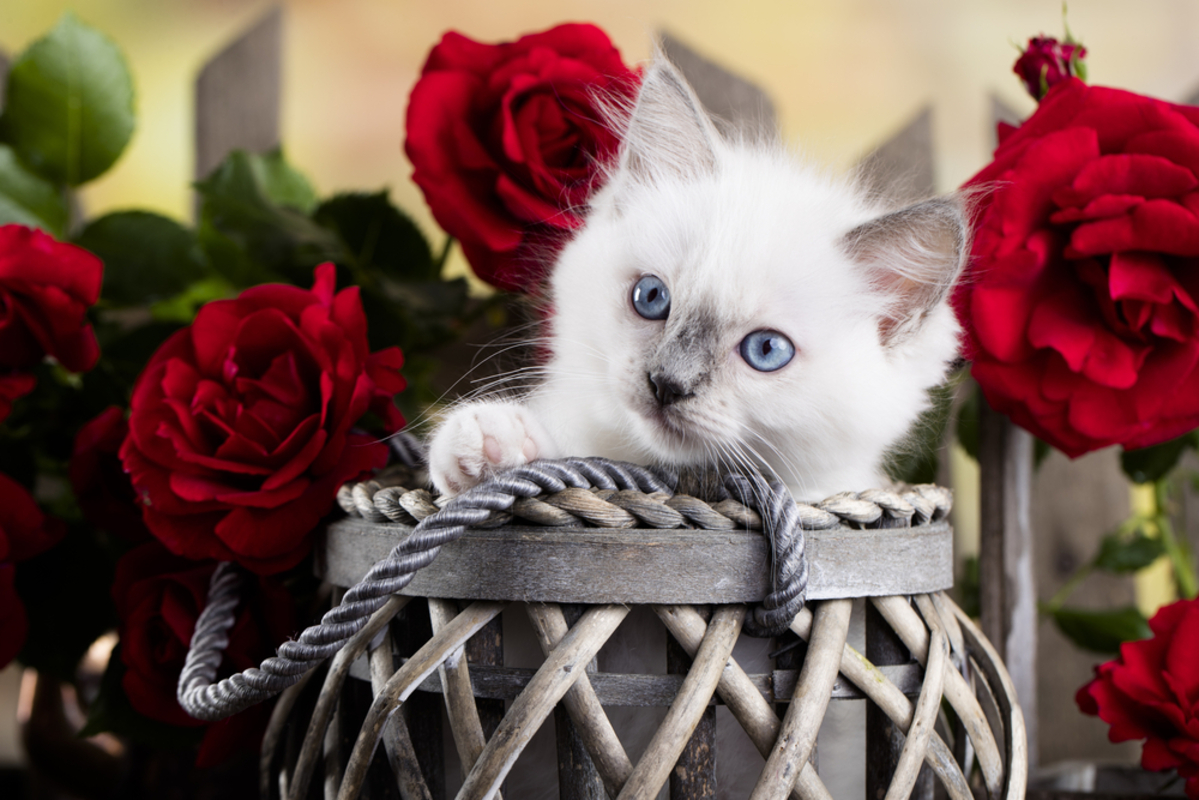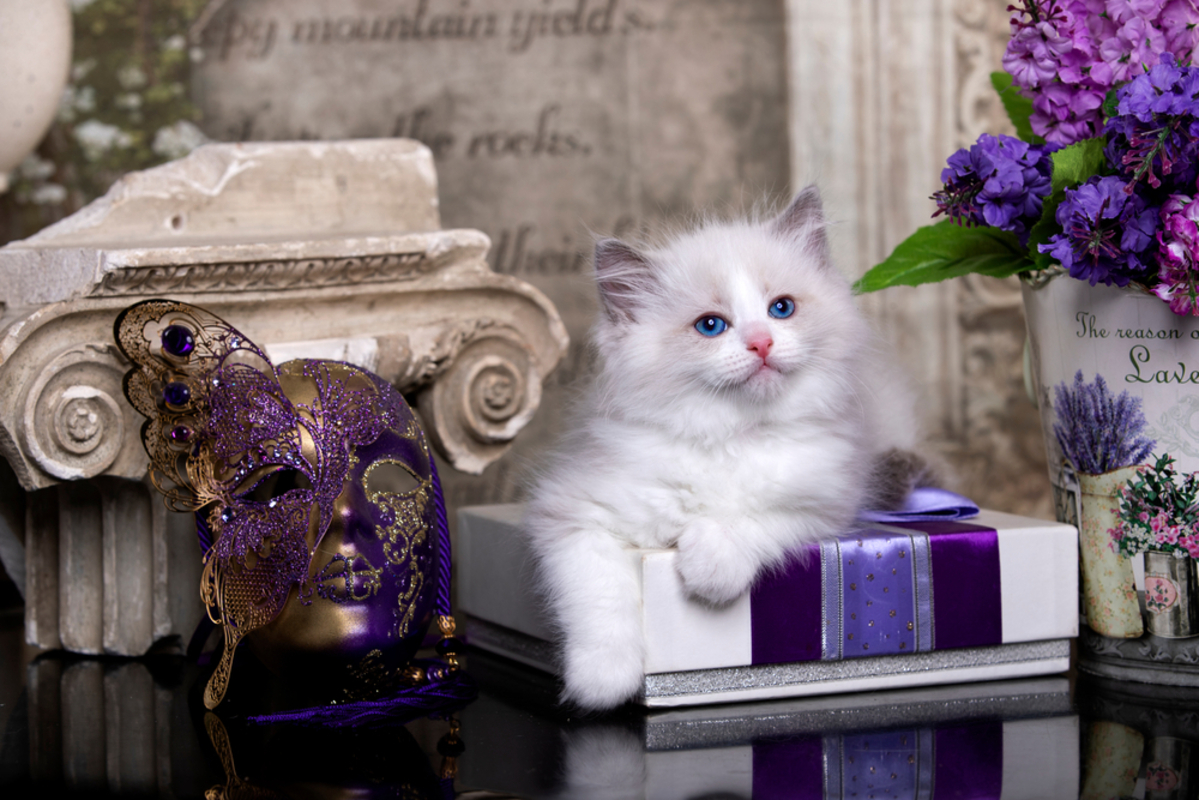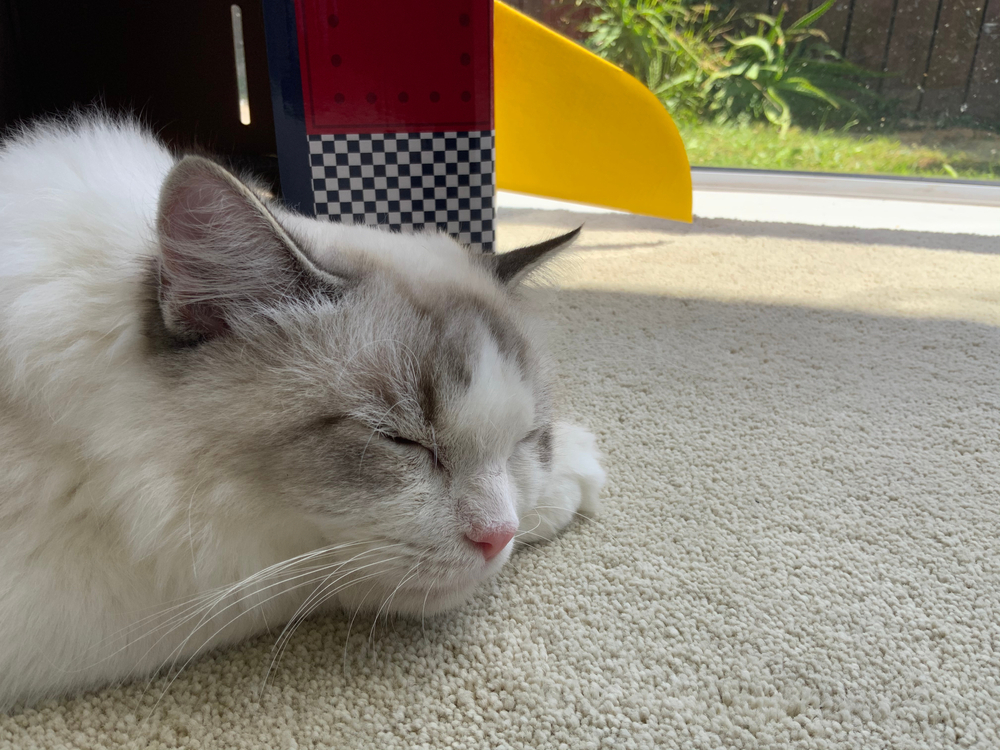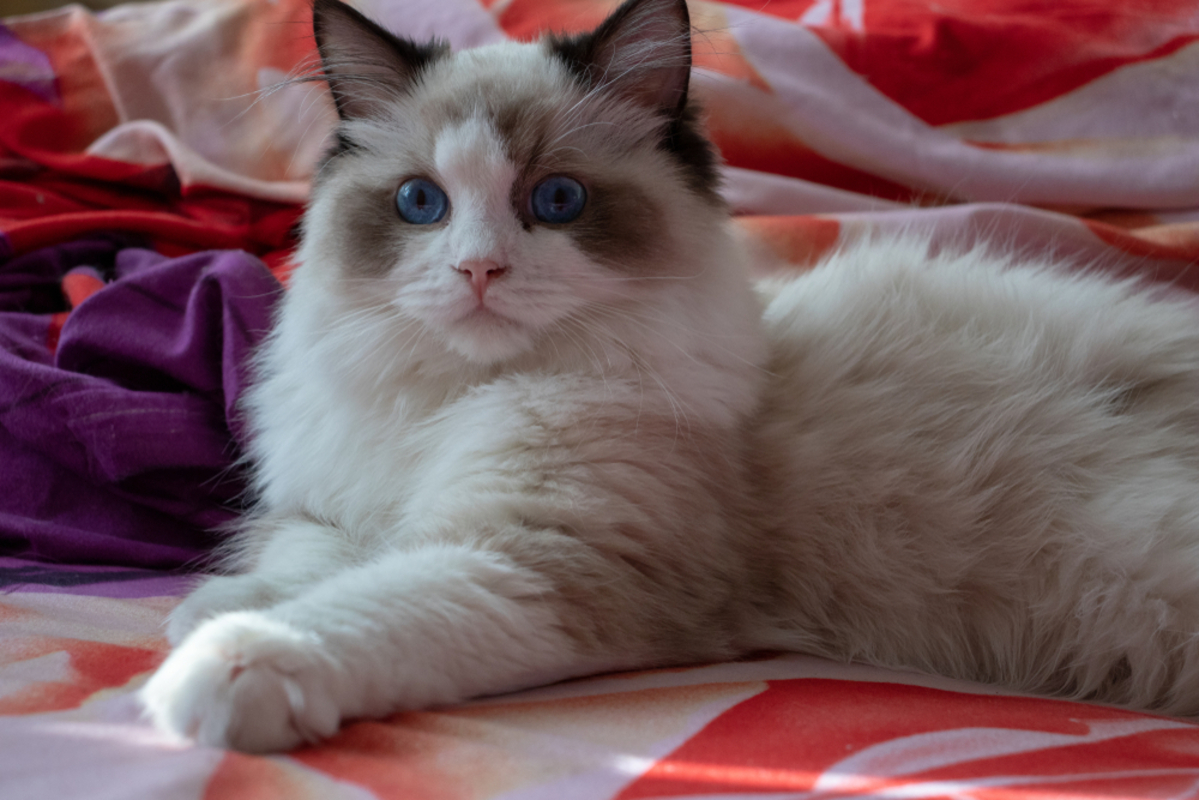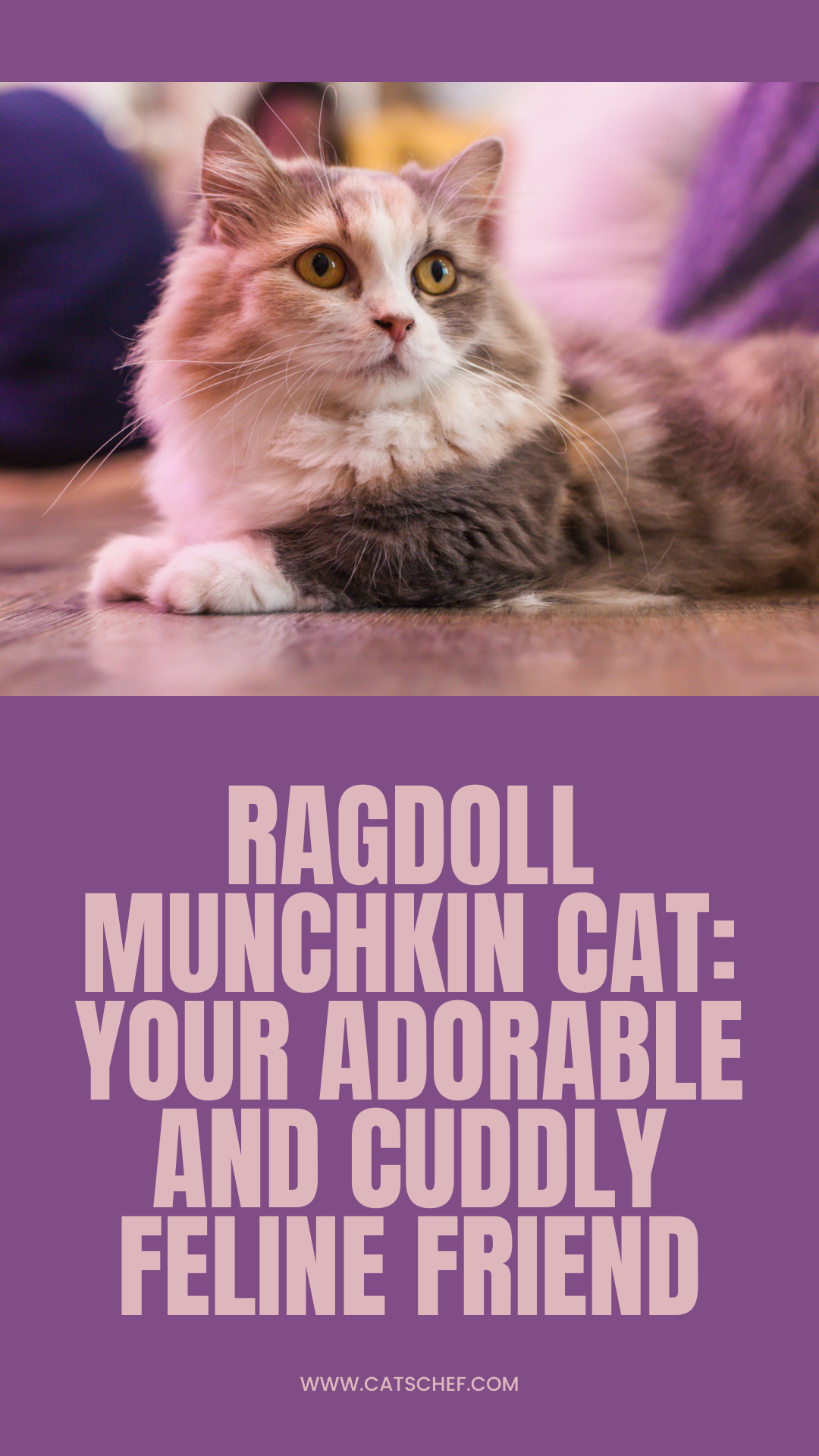📖 Table of Content:
Sometimes, it’s hard for us to find the middle ground, and that can be tricky when you’re looking for a new kitty to bless your home. You’re torn between a majestic Ragdoll and an adorable Munchkin, and you simply can’t choose. What if I told you that you don’t have to? A Ragdoll Munchkin cat might be your solution.
It seems almost impossible to crossbreed these two completely different felines, right? Well, it’s not! This adorable mix brings the best of both worlds – the Ragdoll’s wonderful temperament, and the Munchkin’s unique appearance.
Still, getting a kitty shouldn’t be taken lightly. You need to consider what kind of lifestyle you live, as well as your needs, personalities, and expectations. Doing the proper and thorough research before adopting a feline buddy is one of the most important parts of the process.
I know how hard it can be to resist a Ragdoll Munchkin cat and her adorable blue eyes, soft coat, and stumpy legs. However, before you bless your life with one, it’s good that you’ve decided to read more about this mix, first.
To understand this crossbreed better, we’ll first learn more about their purebred parents, and move on to some of the most common Ragdoll Munchkin cat characteristics. Let’s wait no longer!
What’s a Munchkin cat?
To better understand the Ragdoll Munchkin mix, it’s best to learn more about both of their parents. Their smaller ancestors, Ragdolls, are known for their super short and adorable legs, and long bodies. These unusual proportions, however, don’t stop them from being their playful, active selves.
Because their unique appearance is due to a genetic mutation, there’s quite a controversy about Munchkins in the feline world. While some organizations like TICA recognize them as a breed, other ones like Cat Fanciers Association still refuse to do so.
The cool thing about them is that the Munchkin kitty holds a record for being the shortest cat in the world! Knowing this, it feels almost impossible to accept that the Ragdoll mix is real, but your unique Ragdoll Munchkin buddy will show you all the beauty both of these breeds have.
What’s a Ragdoll cat?
Ragdoll cat is on the completely different side of the spectrum. As one of the largest feline breeds you could have, Ragdoll is completely different from her tiny partner, Munchkin. Their name comes from the fact that they go limp when being picked up, just like a ragdoll.
They’re wonderful fluffy companions, as they provide their human parents with plenty of love and affection. They’re friendly, loving, and everyone’s dream cuddle buddies thanks to their affectionate nature and semi-long, silky fur.
Ragdolls get along pretty well with other pets and children, and they make wonderful companions to big families. These fluffy giants enjoy having company, and they absolutely love every bit of attention they can get. Overall, they’re incredible furbabies that bless every home they become a part of.
Ragdoll Munchkin cat: appearance
Because both of her purebred parents are completely different when it comes to the way they look, it’s hard to know what your Ragdoll Munchkin cat will look like. That mostly depends on whose genetics she’ll get. These adorable fluffs inherit all of their characteristics from both Ragdolls and Munchkins.
However, there are some things that are more common than others. For example, Ragdoll Munchkins usually have slightly bigger heads with adorable short legs. Because of the beautiful Ragdolls, their faces are usually oval-shaped, and they have a rich, medium to long coat.
They come in a wide range of colors and patterns, the most common ones being white, black, tabby, calico, and brown. Another beautiful thing about their appearance are the piercing blue eyes they get from their Ragdoll side. However, that’s not set in stone, and some can also have green or amber eyes.
Despite their large Ragdoll parent, these kitties are usually medium-sized thanks to their mixed genes. Because they have short legs, it’s important that you keep your Ragdoll Munchkin’s diet healthy. Obesity can put too much pressure on her joints and lead to arthritis.
Ragdoll Munchkin cat: personality
As I’ve said, these unique felines bring the best of both worlds. They have wonderful personalities, just like their parents. However, just like it’s the case with their appearance, Ragdolls and Munchkins are very different when it comes to their personalities, too.
Although they’re small, Munchkins come with big personalities. They love to jump around and go on adventures, and they’re very friendly. Mischief is their middle name and they never lose their playful side, no matter how old they get. They’re bound to turn your home into their playground!
Ragdolls, on the other hand, are very sweet, relaxed, and absolutely love to be cuddled and held. They quite literally melt in your arms and could spend hours napping in your lap. The Ragdoll Munchkin cat is a great balance between these two breeds.
This unique feline will be blessed with the intelligence of both of her parents. She’ll bring plenty of life and energy to your home, while still enjoying spending time in your lap, too. They’re a great choice for first-time owners as they’re generally pretty easy to deal with.
They’re super social and cuddly, and that doesn’t change throughout the years. Still, their personality will mostly depend on whose genetics they inherit the most. No matter what, your Ragdoll Munchkin will love to spend time with you and your family, and they’re really fun to have around.
If you have other pets, don’t worry. Your mixed fluff will enjoy their company, too! Just make sure you introduce them properly. Our feline buddies don’t like changes, so take it easy. Exposing your fluff to new people, pets and experiences can be stressful, so give her some time to adjust.
Ragdoll Munchkin cat: health, training and care
To provide your Ragdoll Munchkin with the life every fluff deserves, you need to know how to properly take care of her. Because of that, it’s important to know what are some of her training and grooming requirements, as well as potential medical conditions you need to pay attention to.
1. Health
Good news! Ragdoll Munchkins are a relatively healthy breed thanks to their good genetics. However, just like every other cat, they can develop some health issues over time. Here are some of the common ones:
- Polycystic kidney disease is often inherited from parents who suffer from this condition.
- Hypertrophic Cardiomyopathy – a disease that causes the heart muscles to thicken, is common among Ragdoll felines.
- Lordosis – a curve in the spine that is common among Munchkin cats due to their genetic mutation.
No matter what, it’s crucial that you consider both parents of your Ragdoll Munchkin cat. Ask the breeder about the history of their diseases and it will give you a hint of what you might expect.
2. Grooming and exercise
Luckily, neither Ragdolls nor Munchkins are difficult to groom. You’ll be okay with brushing your mixed kitty weekly, simply to remove the excess hair and prevent tangles or mats from forming.
However, if she inherits a long, fluffy coat from her Ragdoll parent, you might have to brush it several times per week. When it comes to bathing, they might require it more often than other breeds. This is simply because of their inability to clean themselves due to their short legs.
When it comes to exercise, you should take it seriously. Ragdoll Munchkin cats are prone to obesity, which can be really difficult to deal with considering their body shape. Regular exercise will help you maintain her ideal weight.
Luckily, thanks to their playful and energetic nature, that shouldn’t be an issue. Simply get her some interactive toys, and it will be enough for her to spend all her excess energy and stay mentally stimulated.
3. Training
No matter what you’ve heard, all cats can be trained to a certain degree, including Ragdoll Munchkins. Of course, at first, you might find it difficult to housetrain your fluff. However, as both of you become more comfortable, it will be a pretty quick and easy process.
You should start training your Ragdoll Munchkin cat the same day you bring her home. Of course, don’t be pushy and give her some time to explore and adapt, first. Simply taking her to her litter box after each meal should be enough at first.
After she’s learned where her litter box is and how to use it, you can move on to more advanced training. Teach her how to walk on a leash so she can exercise regularly without having to use only your home as her playground.
They’re not dogs, so arm yourself with patience. Your furbaby will need time, love, and plenty of encouragement. Clickers and nice cat treats will help you on your quest to train your fluff successfully.
Don’t punish her and make sure you only use positive reinforcement when training your feline friend. You should never use physical violence or even raise your voice at her, as it will make her scared of ever trying again.
